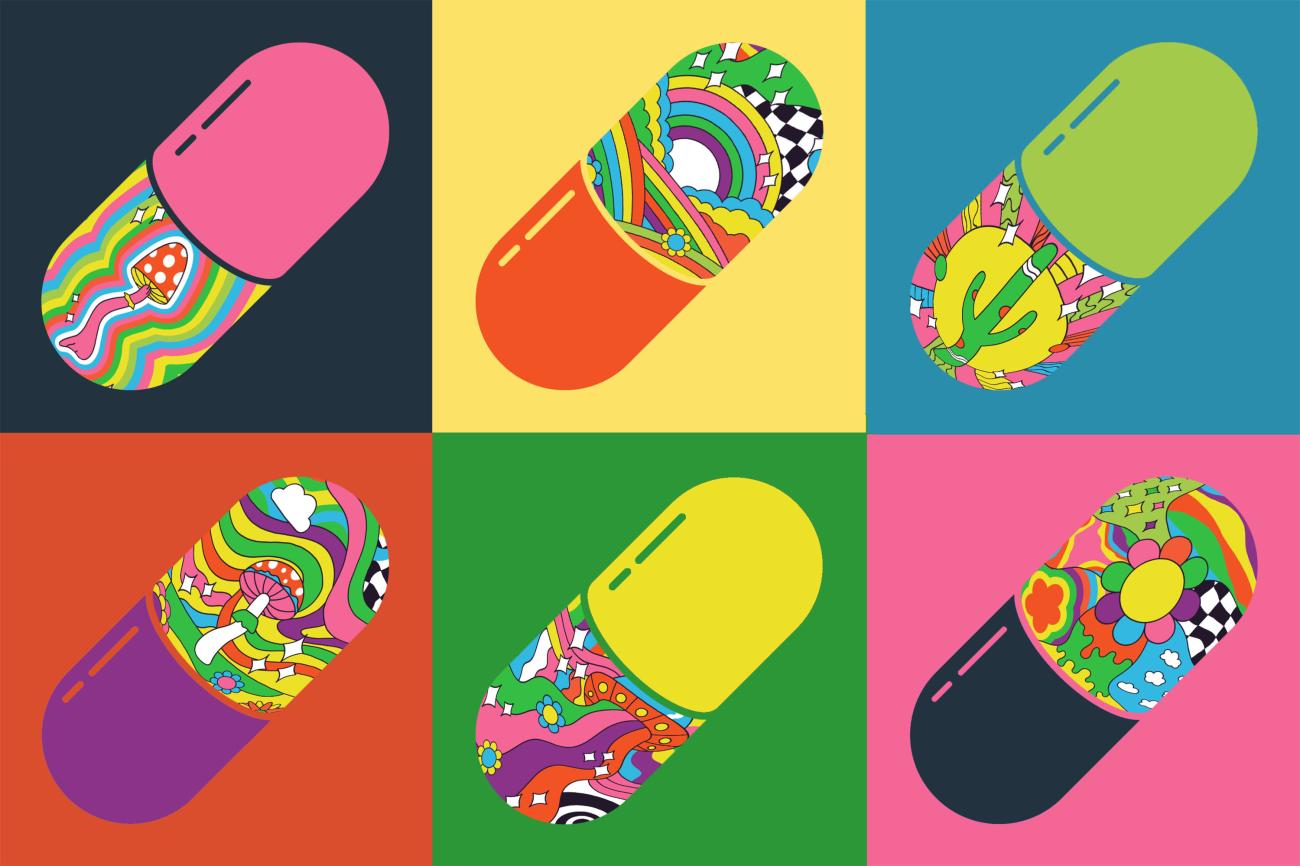Psilocybin fits into clinical trial design through clear choices on dose form, strict blinding plans, robust placebo controls, and tight data standards. Trials succeed when pharmacy intake, therapist training, and site workflows align with those choices. The goal is clean, reproducible data that matches the protocol and holds up under review.
Role of dose form and blinding
Dose form sets the technical base for accuracy, safety, and site operations. It also influences blinding. Choose a form that sites can receive, store, prepare, and dispense with minimal variance.
Common dose forms
- Hard capsules
Simple for pharmacy teams. Strength is easy to scale. Capsules protect from light and moisture. They support matched placebos with similar weight and sound. - Oral solution
Flexible for titration. Requires tight stability controls and measured preparation. Labels must specify volume and timing. Placebo needs similar viscosity and taste. - Film or tablet
Useful for standardized disintegration times. Convenient for direct observation. Requires tight control of uniformity and packaging. - Full spectrum extract
Can support research on entourage effects. Needs expanded COAs, tighter method validation, and placebo designs that match flavor and aroma.
Blinding from the first box to the dosing room
Blinding starts before arrival at the site. It rests on a matched kit system and ends with dosing day behavior that does not reveal allocation.
- Kits and labels
Use neutral language, uniform fonts, and consistent colors. Randomization codes should never appear on shipping or storage labels. - Matched presentation
Weight, sound, shape, smell, and appearance must align across active and placebo. Capsules often help here. Liquids require more care. - Pharmacy workflows
One role prepares, another verifies. Logs record every step. Any difference in handling time or instruction wording can hint at allocation. - Therapy room discipline
Staff avoid cueing language. Checklists help keep scripts neutral. Avoid objects or rituals tied to expected effects.
Dose form and site capacity
Dose form affects staffing and room time. Capsules speed prep. Solutions add steps and checks. Films reduce prep but need handling rules. Match the form to site experience and storage equipment. Verify that satellite sites can follow the same plan.
Placebo challenges in psychedelic trials
Placebo design is hard when the active agent produces clear subjective effects. The aim is a blind that holds through early minutes and across the full session.
What makes a placebo credible
- Sensory match
Sight, taste, and texture should align with active. If active has a distinct flavor, placebo should mimic it. - Ritual match
The prep ritual should feel identical. Measure volumes, use the same glassware, follow the same timing. - Expectation control
Scripts for consent and preparation visits should avoid predictive claims. Staff training keeps phrasing consistent.
Managing functional unblinding
Even with strong design, participants and staff may form beliefs about allocation. Plan for this in both operations and analysis.
- Assessment timing
Collect blinding index or allocation guess at set timepoints. Do not let guesses shape the visit tone. - Therapist rotation and supervision
Rotate staff to reduce pattern recognition. Supervision checks drift in language or behavior. - Analysis plans
Predefine how you will handle unblinding signals. Sensitivity analyses can test for bias by site, staff, or visit order.
Active placebos and ethics
Mild active placebos can add side effects that resemble an early active state. Use caution. Ethics boards will look at risk, participant comfort, and scientific need. If used, document rationale and monitoring. Match the participant experience while keeping safety first.
Data collection standards
Psilocybin trials rely on accurate measurement of clinical change, safety, and process quality. Data standards cover what you collect, how you collect it, and how you prove it is reliable.
Core clinical endpoints
- Symptom scales
Select validated instruments that fit the indication. Define primary and key secondary endpoints with exact windows. - Function and quality of life
Add tools that track return to work, social function, or daily living. These support payer views and long horizon follow up. - Durability
Plan timepoints that test persistence of effect. Set visit windows that sites can meet.
Safety and monitoring
- Adverse events and serious adverse events
Train staff to capture onset time, severity, relation to study drug, and outcome. Monitor vitals during and after sessions. - Suicidality checks
Use standardized tools on a fixed schedule. Specify action thresholds and referral steps. - Concomitant medications
Track interacting drugs from screening to last visit. Document all changes with reasons.
Pharmacy and product data
- Chain of custody
Every handoff is recorded. Lot, kit, and vial numbers match logs. Discrepancies trigger a documented investigation. - Temperature records
Continuous monitoring with alarms. Excursions recorded with start, end, and product disposition. - Accountability
Counts align with dispensing records and return logs. Wastage is witnessed and signed.
Laboratory standards
- Assay methods
Psilocybin and psilocin quantification uses validated methods with set pass limits. - Interlab agreement
Cross checks confirm agreement within preset ranges. Results are archived and linked to each lot. - Stability
Long term and accelerated studies reflect real site storage. Transport studies model actual shipment times and temperatures.
Digital capture and audits
- eCRF discipline
Time stamps, edit trails, and role permissions prevent undocumented changes. Queries are resolved with dated notes. - Source data verification
Monitors check consent, vital signs, dosing logs, and therapy notes against entered data. - Central review
Outlier detection across sites flags timing slips, score heaping, and unusual placebo responses.
As suppliers, we align kit maps, label sets, and shipment records with hospital workflows, then join mock intake to confirm that receiving steps match documents and cartons. That reduces intake holds and supports on time first dose.
Practical tips for trial planners
Build the protocol around real site capacity
- Pick dose forms that match pharmacy equipment and staff skills
- Set visit windows that work with clinic schedules
- Limit required devices to what sites already use
Lock blinding behaviors with simple tools
- Use one page scripts for each critical visit step
- Run short role play drills each month
- Track allocation guesses to spot drift early
Protect the blind in the room
- Keep language neutral before, during, and after dosing
- Standardize music rules, lighting, and breaks
- Avoid objects that participants link to specific effects
Make placebo planning a workstream
- Taste test and appearance test placebos with independent staff
- Time prep steps to match active within seconds
- Document every match point in the pharmacy manual
Treat data quality as a daily habit
- Review visit window adherence each week
- Watch deviation rates by site and act on trends
- Keep a living FAQ for sites to resolve repeat issues fast
Keep your evidence package ready
- Maintain a single folder with COAs, stability, and interlab checks for the current lots
- Archive import packets and shipping memos by site
- Log all temperature excursions with product disposition notes
Plan for durability from day one
- Set follow up schedules that sites can meet for months
- Simplify remote visit options where allowed
- Pre write reminder messages and call scripts
Use rehearsal to surface gaps
- Run mock receiving with empty cartons and real labels
- Practice dosing day timing with a full team
- Test alarms, backups, and room turnover before activation
Closing practical tips for trial planners
Psilocybin can fit smoothly into clinical trial design when dose form, blinding, and data plans align with real site workflows. Start with a form that sites can handle. Build a placebo that matches the senses and the ritual. Lock neutral language with short scripts. Treat pharmacy intake as a gate that needs practice runs. Keep data standards simple, specific, and repeatable. With these steps in place, teams can protect the blind, dose on schedule, and produce datasets that stand up to scrutiny.




